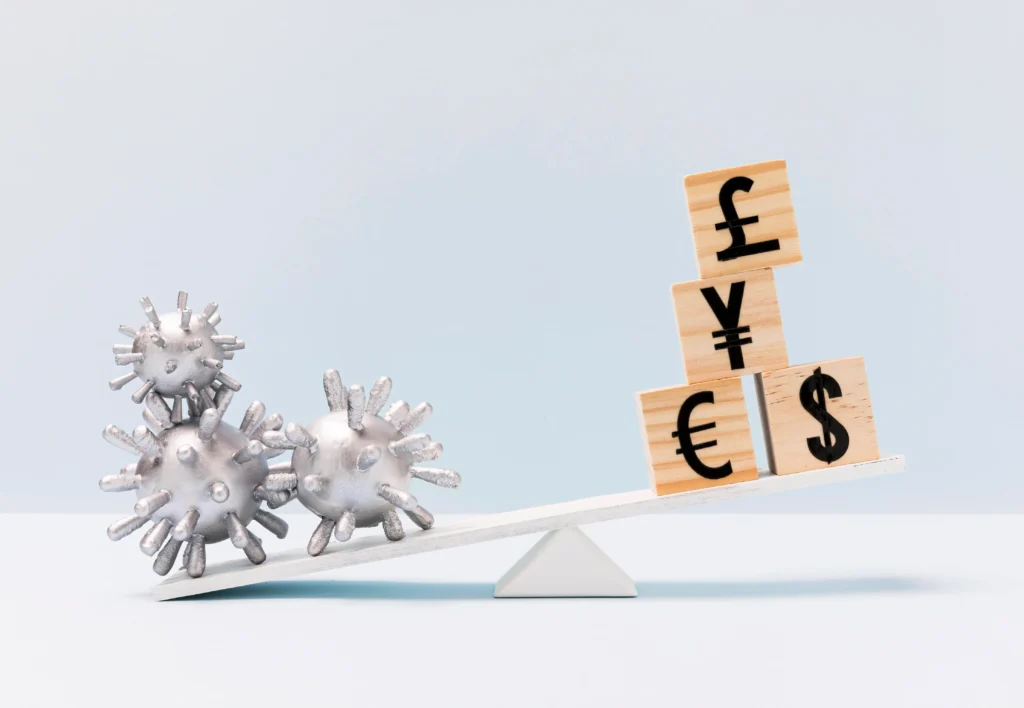Fear is one of the strongest forces in trading. It influences timing, decisions, and even how traders perceive opportunities. The fear of losing can make a trader hesitate when they should act — or act recklessly to avoid discomfort. Learning to manage that fear is essential for consistency and confidence in every market condition.
Keep reading to learn more!
Why The Fear Of Losing Exists
The human brain is wired for survival, not speculation. Financial loss triggers the same emotional response as physical danger — the instinct to protect and withdraw. In trading, this often appears as hesitation, early exits, or total avoidance of valid setups.
Fear grows stronger when uncertainty meets risk. Because every trade carries unknown outcomes, fear will always exist — but how you handle it determines your results.
Note: The goal isn’t to eliminate fear, but to understand and control it.
How Fear Affects Trading Performance
When fear dominates, logical decision-making weakens. Common behavioral patterns appear:
- Premature exits: Closing trades too early to “lock in” small profits.
- Avoidance: Skipping valid setups after a loss.
- Overcompensation: Increasing position size to recover quickly.
- Self-doubt: Questioning strategy or second-guessing signals.
Each of these reactions reduces consistency and increases emotional fatigue.
Tip: The market doesn’t punish fear — it punishes reaction to fear. Calm control is the real advantage.
Step 1 – Redefine What Losing Means
Most traders view losses as failure. Professionals view them as business expenses — necessary costs of operating in a probabilistic environment.
Shifting this mindset changes your relationship with loss.
Instead of “I lost,” think “I paid for information.” Every loss reveals something about execution, timing, or structure. When that insight is recorded and learned from, it becomes productive.
Advice: Treat every loss as data. Measure, analyze, and improve — not regret.
Step 2 – Reduce Risk To Reduce Fear
The emotional intensity of fear often correlates with position size. The more you risk, the stronger your body’s stress response becomes.
To manage it:
- Risk no more than 1–2% per trade.
- Avoid using leverage emotionally.
- Keep trade exposure proportional to account size.
Lowering risk instantly lowers fear because your emotional system recognizes that no single trade can cause damage.
Note: Confidence grows naturally when losses no longer feel dangerous.
Step 3 – Focus On Process, Not Outcome
When attention shifts from profits to execution, fear loses power.
You can’t control whether a trade wins — but you can control how you identify, enter, and exit it.
Focus each day on:
- Following your trading plan precisely.
- Sticking to entry and exit rules.
- Reviewing setups objectively afterward.
By controlling the process, results eventually align without emotional interference.
Step 4 – Build Evidence Through Routine
Confidence and fear are opposites — and confidence grows from evidence.
Each day you trade according to plan, even with a small size, you prove your reliability to yourself.
Practical methods include:
- Keeping a detailed trading journal of setups, emotions, and results.
- Backtesting strategies over historical data to reinforce belief in the system.
- Reviewing only verified setups — not random ideas or impulses.
Tip: The more data you collect, the less fear depends on emotion and the more it relies on logic.
Step 5 – Separate Trading Identity From Results
Many traders internalize outcomes. A winning streak feels like success; a losing streak feels like failure. This emotional connection magnifies fear.
You are not your trades. Your job is to execute consistently within your system. When trades lose, the system may need refinement — not your identity or value as a trader.
Advice: Keep performance metrics objective. A losing week doesn’t mean you’re bad; it means you’re testing probability over time.
Managing Fear During Active Trades
Fear doesn’t disappear once you enter a position. Managing it in real time keeps focus intact:
- Use alerts instead of staring at charts.
- Take partial profits to reduce emotional pressure.
- Reassure yourself that the stop-loss is already protecting you.
- Avoid changing stop levels mid-trade.
Note: Emotional stability comes from predefining all decisions before the trade begins.
Preventing Fear From Returning
Fear returns when uncertainty increases or routines weaken. Maintain consistency through:
- Regularly reviewing results without judgment.
- Avoiding long breaks that reset emotional confidence.
- Keeping the environment calm — no distractions or conflicting information sources.
- Using scheduled breaks after stressful sessions to restore balance.
Over time, fear fades as confidence, evidence, and structure replace uncertainty.
Frequently Asked Questions
Can Fear Ever Be Useful In Trading?
Yes. Controlled fear creates awareness and respect for risk. The goal is not fearlessness, but balanced caution.
How Do I Know If I’m Trading From Fear?
If decisions feel rushed, hesitant, or emotionally charged, fear is likely influencing your judgment.
Does Experience Eliminate Fear?
Not completely, but it reduces intensity. Experience turns emotional reactions into structured responses.
Should I Trade After A Large Loss?
Only after reviewing the loss and resetting emotionally. Fear is strongest immediately after setbacks — trade small or step away.
Conclusion
Fear will always exist in trading, but it doesn’t have to control your results. By overcoming the fear of losing in trading through structure, reduced risk, and objective review, you turn uncertainty into measured confidence. The difference between a fearful trader and a professional isn’t emotion — it’s preparation, repetition, and perspective. Once fear becomes feedback instead of resistance, consistency begins.

















